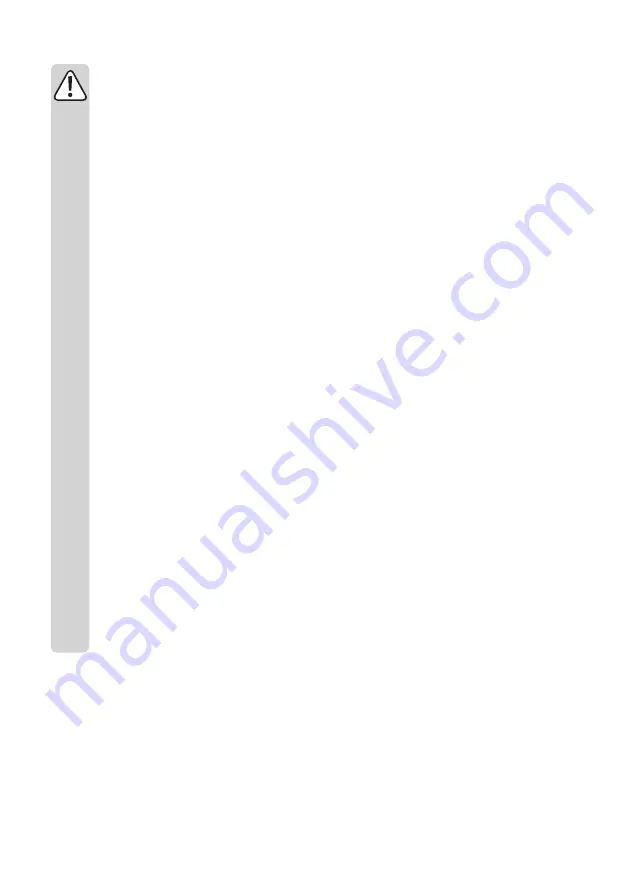
23
f) Compressor
• Keep the exterior of the compressor dry, clean and free from oil & grease. See section “Care and
Cleaning” for further information.
• Do not exceed the pressure rating of any component in the system.
• Protect material lines and air lines from damage or puncture. Keep hose and power cord away from
sharp objects, chemical spills, oil, solvents and wet floors.
• Risk of bursting when using with objects the compressor output pressure is greater than marked
maximum pressure of item to be inflated. Do not use for objects with a rated pressure greater than
10 bar (approx. 150psi).
• Inspect unit for cracks, pin holes, or other imperfections that could cause the compressor to become
unsafe. Never cut or drill holes in the compressor.
• Always be aware that misuse or improper handling of this compressor can cause injury to yourself and
others.
•
Never leave a compressor unattended with the air hose attached to the item is being inflated.
• Do not continue to use a compressor or hose that leaks air or does not function properly.
• Always disconnect the air supply and power supply before making adjustments, servicing or when the
unit is not in use.
• Do not attempt to pull or carry the compressor by an attached air hose.
• Protect your lungs. Wear a face or dust mask if the operation is dusty. Following this rule will reduce the
risk of serious personal injury.
• Do not use this unit to spray chemicals.
• Check damaged parts. Before further use of the compressor, a guard or other part that is damaged
should be carefully checked to determine that it will operate properly and perform its intended function.
Check for alignment of moving parts, binding of moving parts, breaking of parts, mounting and any other
conditions that may affect its operation.
•
To reduce the risk of over inflation, use a reliable pressure gauge periodically during inflation. The
pressure gauge on the compressor is for reference only and is therefore not binding for exact values.
• Allow pump to cool for ten minutes after each 10 minutes of continuous operation. Never block the
inflating or deflating outlets while operating.
•
Stand 3 m away from the object that is being inflated.
•
Risk of Bursting. Carefully monitor objects during inflation.
• When inflating items rated for 0.7 bar (approx. 10 psi) or less, inflate in short bursts and check
after each burst by feel or determine accurate pressure using a calibrated measuring device.








































